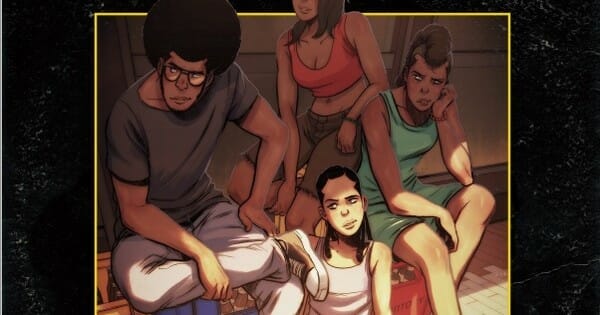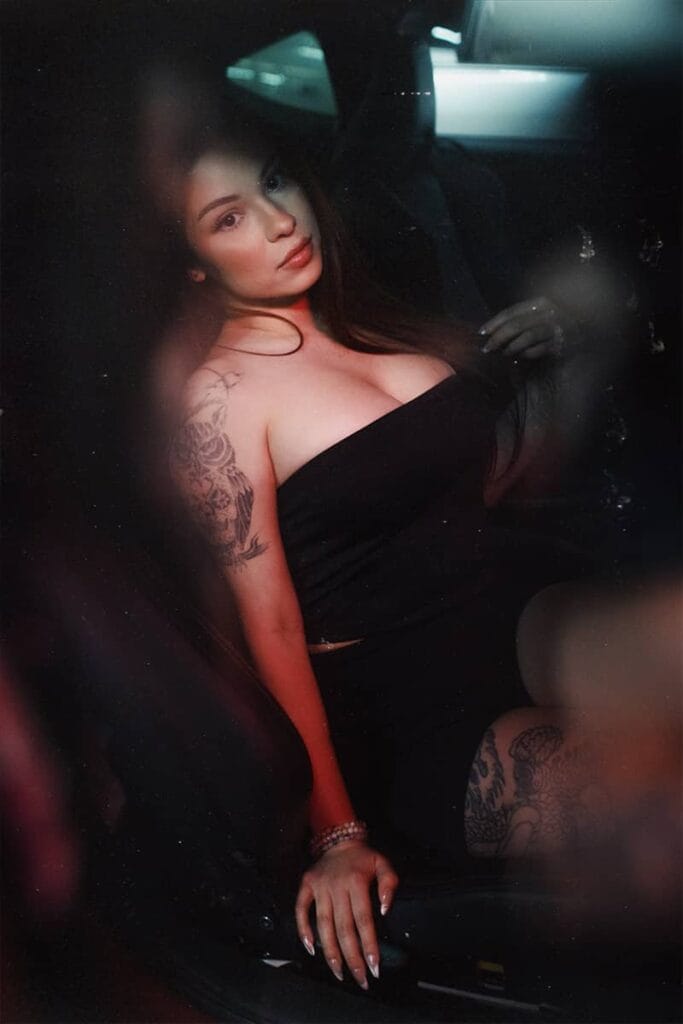
Tephlon Funk GN 1
Drugs. F-bombs. Street-wise kids, bitter undercover cops, and angels. Welcome to the world of Tephlon Funk, a collaboration between an American writer/creator and two French illustrators. It’s an interesting piece, wearing its influences proudly – there’s a real grounding in Cowboy Bebop and Spike Lee films here that you can pick up on long before the author’s afterword mentions them. That’s both a positive and a negative because at times things do feel very derivative; was it really necessary to include a katakana version of the title? Why is Giselle’s weapon of choice a katana instead of something a bit less obviously manga-inspired? While the story itself is a far cry from early OEL books that sought to simply mimic manga, issues like these risk turning off readers who might otherwise very much enjoy Metayer’s book.
The story follows Inez, a fourteen-year-old kid from NYC who is looking to get out. She feels trapped, and like most fourteen-year-olds, she’s ready to make some bad decisions in pursuit of her goal, in her case allowing her pal Nasim to introduce her to Kefflow, the drug lord he works for. Before Inez can do anything permanent, an older boy steps in, and the next thing Inez knows, she’s standing by while he beats up one of Kefflow’s goons. Understandably, at this point, Inez has exactly zero clue what’s going on or who she can trust, and the answer she’s leaning toward is “no one.” Honestly, that seems like a safe bet. Both Nasim and Gabriel very much want Inez to trust them, for their own separate reasons, and at first, she’s understandably leaning towards Nasim; after all, he’s been her pal for a long time, and she only just met Gabriel. But when she meets undercover cop Carmen, she begins to question all of her choices, something that Carmen herself has done in the years since she was Inez’s age, although we don’t have the full picture yet.
One of the strengths here is how Inez is written. The girl is angry, and she has every right to be, something exacerbated by the horrors of being fourteen. No one is being straight with her, and by the time she learns the truth about Gabriel (it’s right there in the name), she’s well and truly confused. Throw in a mysterious heavenly drug and some weird events from 1986 (the story proper takes place in 1994), and it’s clear that there’s a lot more to this world and that we’re only really reading the prologue. Carmen is likewise well-written, and she serves as the link between the book’s two time periods – although Gabriel is present in both, as is Giselle, there’s a clear parallel between Inez and Carmen. Carmen made her choice about which side of the law she wanted to be on, and now Inez is facing a similar decision. We can see that both Gabriel and Giselle have thoughts about Carmen’s trajectory, and that may turn out to be a piece of Inez’s ultimate journey.
There’s frankly a lot to take in. Competing plotlines and timelines are certainly part of it, but it’s also a little hard to get a handle on the two adult female characters, although I suspect that’s on purpose. Carmen and Giselle have a past, and while I don’t think it’s necessarily a mirror to Inez’s friendship with Nasim, it’s clear that something is messy between the two women. The supernatural angle of the tale is likewise a bit up in the air right now – the eponymous tephlon funk appears to be Heaven’s version of marijuana, which is certainly an interesting (and possibly more human) take on your basic angel mythology, but again, this feels like just the tip of the iceberg. I don’t doubt that Metayer is going to explain everything, but this is still a very plot-packed volume, and that can make it hard to fully grasp.
The art is overwhelming as well, although that’s largely in a good way as it strives to establish a time and place. (Posters on walls are particularly good details.) Characters are well-drawn and distinct, with particularly good attention paid to hairstyles, and the backgrounds give a clear sense of the overbearing feeling of being in a crowded, not-entirely-clean place. It’s worth mentioning that one artist does the character art and the other the backgrounds, but you’d never know if you weren’t told, which is a very good sign. In terms of overall presentation, the book has a couple of typos (mostly transposed letters), but the language may give some readers pause, with a lot of (believable) swearing on every page and one use of the r-word that won’t sit well with everyone, although it is in line with the time and place of the book. To balance it out, one character speaks Creole, which isn’t a language you find in a lot of contemporary English literature.
Tephlon Funk is a lot, but I think that ultimately that’s a good thing. It’s certainly something very different in OEL books, which alone makes it worth checking out, and I really do think it’s going to become less overwhelming as we get into the story proper. If nothing else, this is a creative team worth keeping an eye on, because there’s a lot of potential in this collaboration.


